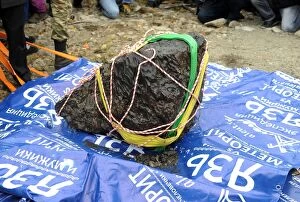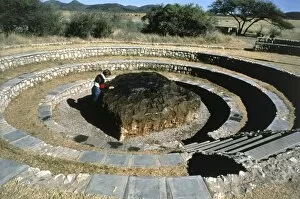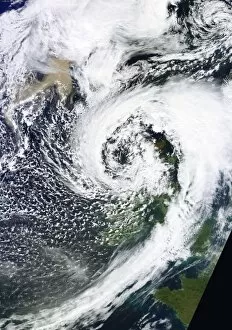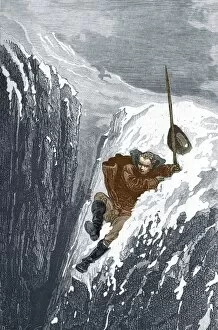Natural Hazard Collection
"Unleashing the Power of Nature: Exploring Natural Hazards and Their Impacts" Witness the eerie beauty of a natural trap adorned with wildebeest skulls
All Professionally Made to Order for Quick Shipping
"Unleashing the Power of Nature: Exploring Natural Hazards and Their Impacts" Witness the eerie beauty of a natural trap adorned with wildebeest skulls, serving as a haunting reminder of the dangers that lurk in nature's grasp. (Natural trap with wildebeest skulls C015 / 6427) Delve into the captivating world of Chebarkul meteorite fragments research, where scientists unravel the mysteries hidden within these extraterrestrial remnants. (Chebarkul meteorite fragments research) Behold an astonishing light micrograph capturing the intricate details of a Chebarkul meteorite, showcasing its otherworldly composition and mesmerizing structure. (Chebarkul meteorite, light micrograph C015 / 2863) Explore the fascinating realm of radiation levels at the Chebarkul meteorite site, shedding light on how this celestial event left an enduring impact on its surroundings. (Chebarkul meteorite site radiation levels C015 / 1553) Marvel at the enigmatic ice hole created by a Chelyabinsk meteor fragment, offering a glimpse into one of nature's most powerful forces that can shape our planet in unexpected ways. (Chelyabinsk meteor fragment ice hole C015 / 1323) Uncover groundbreaking discoveries through ongoing Chebarkul meteorite fragments research as scientists strive to decode secrets from beyond Earth's atmosphere and understand our cosmic connections better. (Chebarkul meteorite fragments research C015 / 2855) Explore further into cutting-edge studies surrounding Chebarkul Meteorites as researchers continue their quest for knowledge about these extraordinary space rocks. (Chebakrulk Meteorites Fragments Research C015/2856). Gaze upon a rare and precious Chebakrulk Meteorite Fragment - witness firsthand this awe-inspiring relic from the depths of space, a testament to nature's immense power.




















